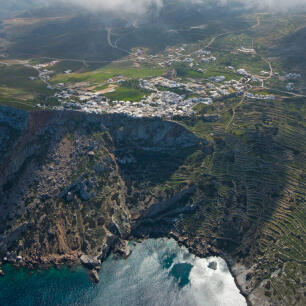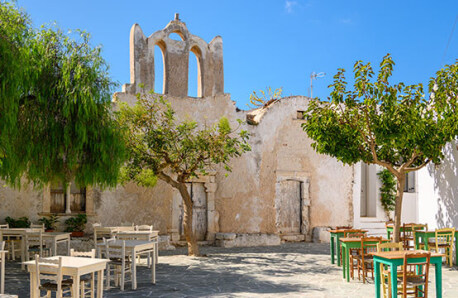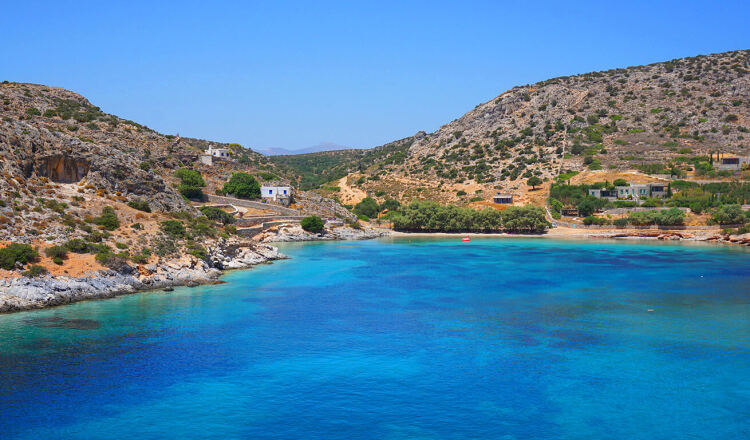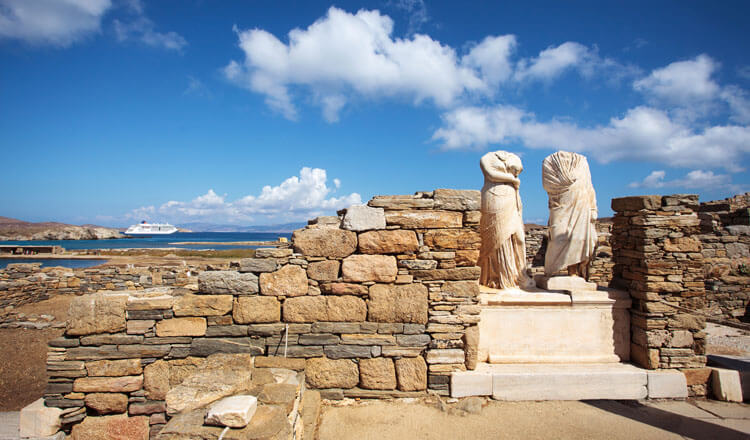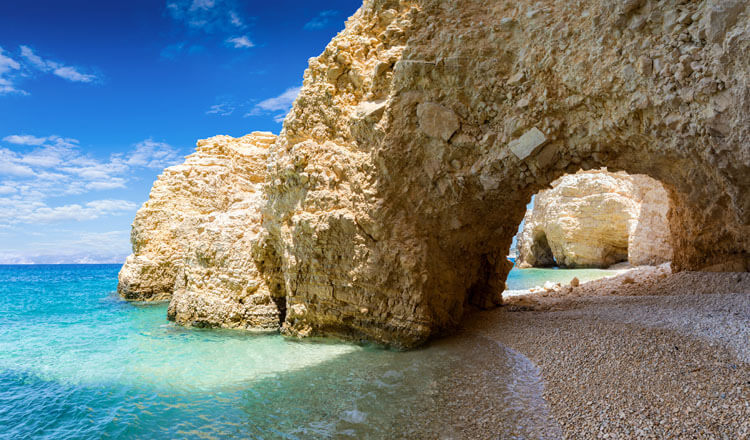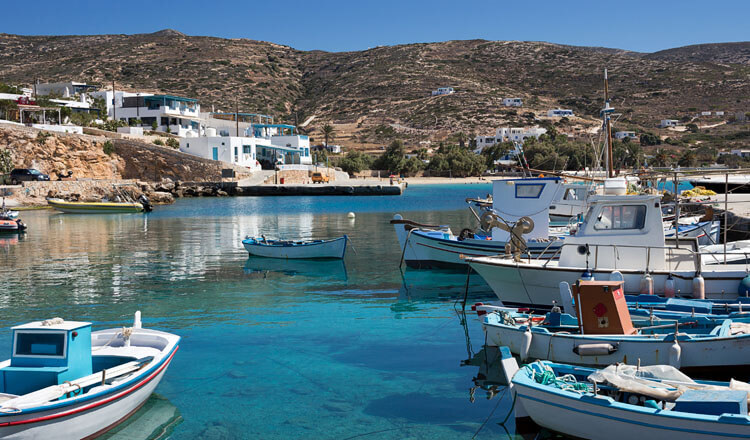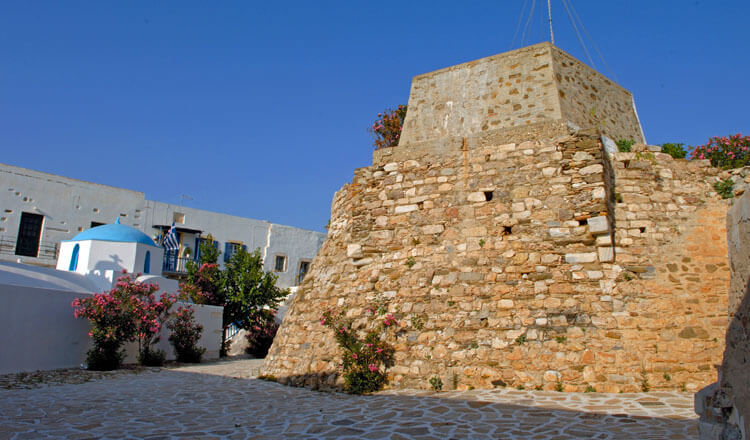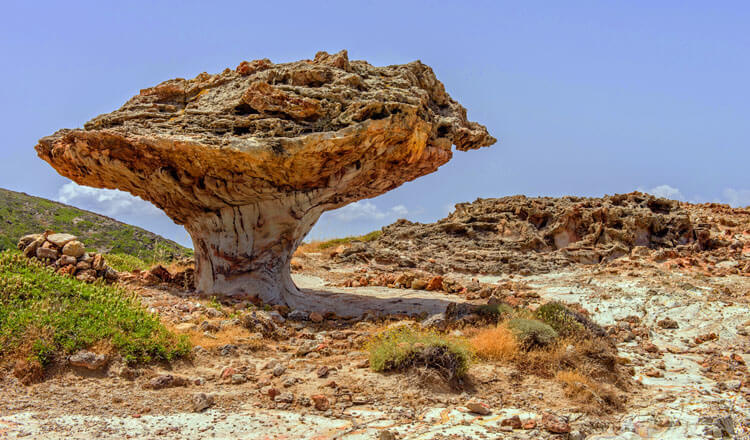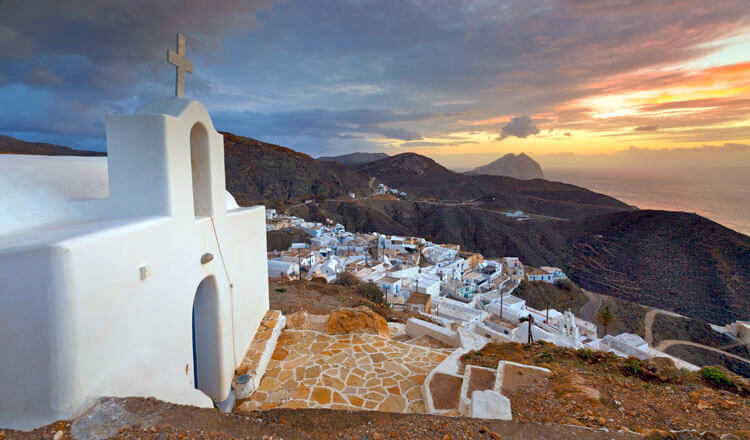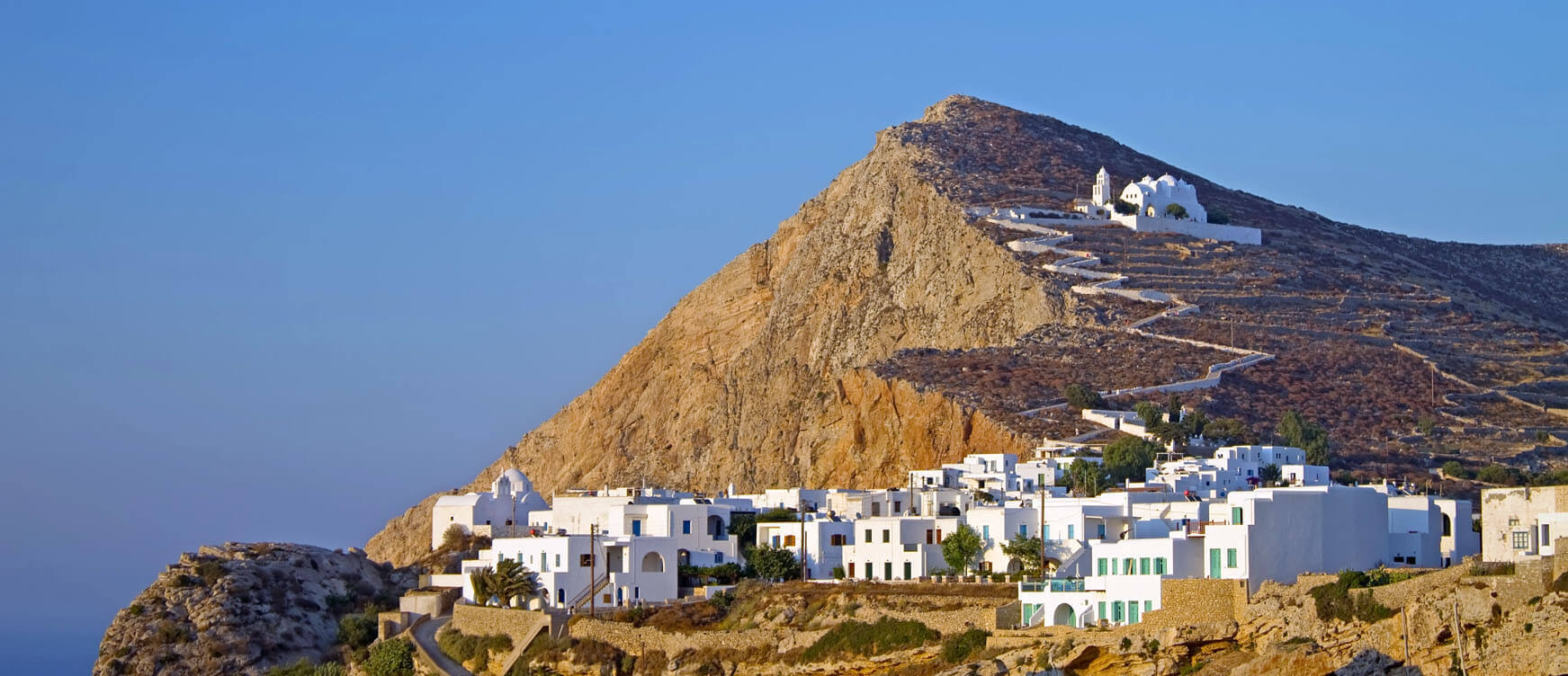
Folegandros
NOW
26 °C
Next 5 days
-
FRI
31 °C
-
SAT
32 °C
-
SUN
33 °C
-
MON
33 °C
-
TUES
35 °C
Source: National Observatory of Athens /meteo.gr
Unique Experiences
According to the myth, Folegandros, son of King Minos of Crete, was the leader of the first group of Cretans who settled on the island, which was named after him.
Touring the Island
The town was built on a 200-metre elevation, inside and around the mediaeval citadel (called Kastro) perched at the edge of the cliff. Blooming bougainvillaea adorn the balconies of the houses in Kastro; set against the deep blue Aegean Sea waters that stretch below as far as the eye can see, they are part of a memorable spectacle. The mediaeval fortified town was built by the Venetians led by Marco Sanudo in 1212, and it includes the churches of Eleousa (1530), Pantanassa, and Agia Sofia; the icon screens inside them are quite remarkable.
Apart from quite a few churches, in the town centre there are beautiful squares lined with coffee houses, tavernas & slab-paved alleys - the most impressive one being that which connects Pounta Square and the Church of the Dormition of the Mother of God. You will also be impressed by the whitewashed houses and their distinctive small neat yards. The Church of the Dormition is one of the first things you’ll see as soon as you arrive in Chora. It’s an all-white building with a stone-paved little alley leading up to it. The church is located on the top of a rock, on the northeast side of the town. It is the most impressive church on the island and it is believed it was built on the ruins of an ancient temple. In the church yard and interior, you will see many ancient Greek inscriptions and pedestals fitted in the walls. The Byzantine silver-dressed icon of the Virgin Mary [Panagia], which is believed to be wonder-working, is by tradition also associated with pirate stories and other legends of Folegandros. It is customary to carry the icon to every household on the island during the Easter celebrations, as a blessing to the faithful. To reach the church, follow the stone-paved street, from Pounta Square (15 min. walk).
Chora is where most of the hotels are located. Piatsa Square and Dounavides Square are two other beautiful places that are worth your visit; they are lined with cafés and restaurants which are the local hangouts for residents and tourists alike.
Visit the churches of Agios Nikolaos (main town church), Taxiarchis (you’ll see impressive icons of the mediaeval Cretan School of Religious Painting), and the Agia Aikaterini & Agios Antonios Church.
If you’re into hiking, take the path from Chora to Agali (45 min. walk).
Other Trips
Karavostasis Village
The island harbour is here. Visit the small church of Agios Artemios and enjoy your day on the village’s lovely beach. On your way to Chora, you will pass by the country chapel of Agioi Pantes, half-built inside a rock.
Agali
It’s a small seaside village, built around the like-named cove. Visit the country chapel of Agios Nikolaos by the like-named beach, and see the Lighthouse at Cape Aspropounta, on Michelos promontory, accessible by foot. The Lighthouse shone its light for the first time in 1912, and its tower is 11 metres high. This location will offer you a wonderful view of the Aegean Sea at your feet.
Ano Meria
The second biggest village on Folegandros is located on the NW tip of the island. It is an agricultural village and most of the houses are not just dwelling places; they are called “themonies”, i.e. they are small-sized self-contained farming units. A visit to the Folk Art Museum will let you in on the ways of the local rural life in olden times, and you will see a house, a stable and all the tools & utensils used by the villagers: the Farmstead of Folegandros is open to visitors in the summer. The museum was founded by the Folegandros Cultural Association.
If you love hiking, you’ll be interested to know that there are four hiking routes you can take from Ano Meria:
- Towards Agali (1hr)
- Towards Zoodochos Pigi Chapel (1 hr 15 min.)
- Towards Ampeli (30 min.), and
- Towards Leivadaki, passing by the Aspropounta LIghthouse on your way back (2 hrs 10 min.)
Latest Events
VIEW ALL
BY SEA
Folegandros is connected to Piraeus and other Aegean ports. The conventional ferries make the route ""Piraeus - Folegandros"" in about 9 hours while the high-speed ones in about 4.Folegandros is also connected with the port of Lavrio.

